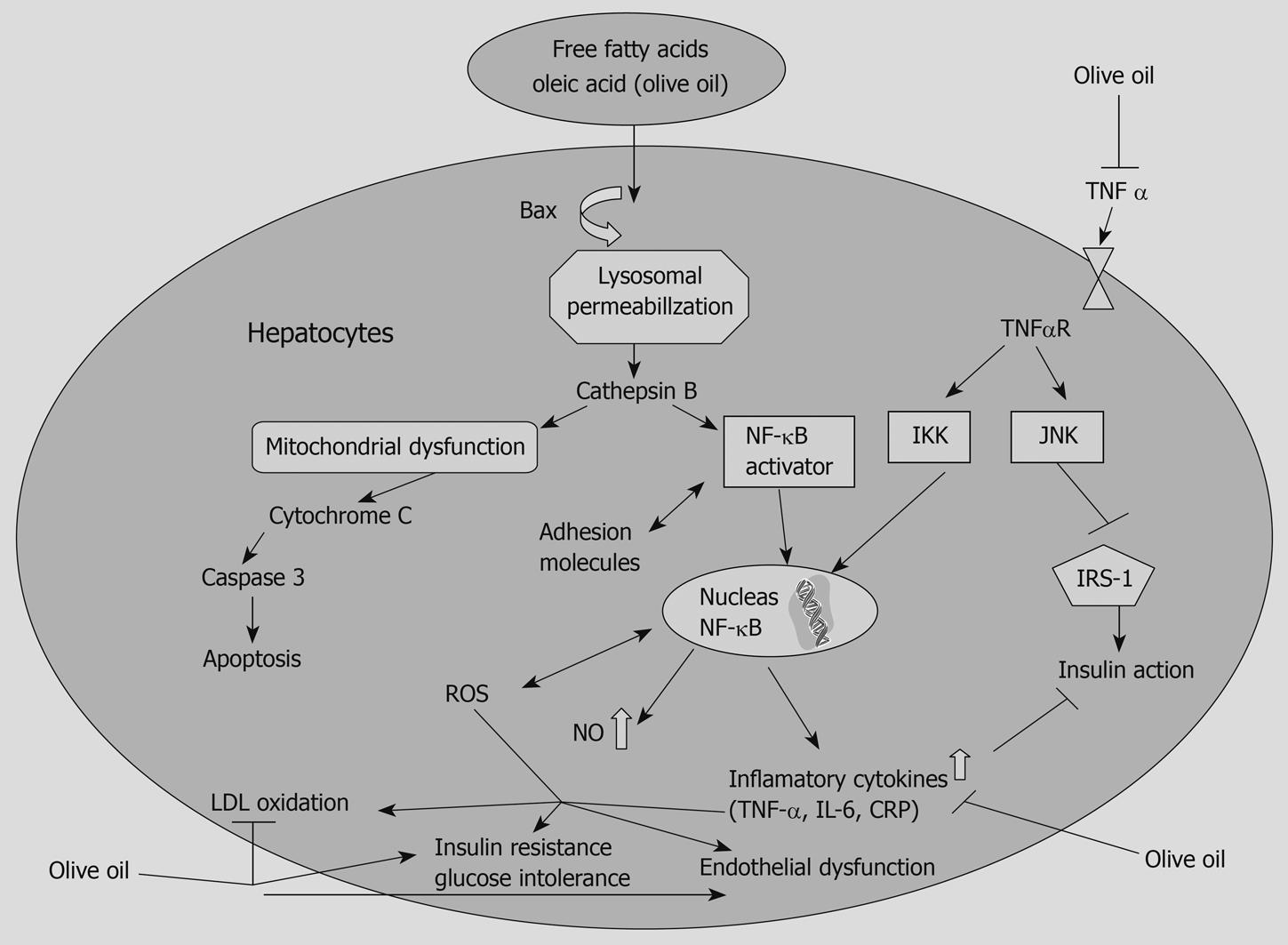Copyright
©2009 The WJG Press and Baishideng.
World J Gastroenterol. Apr 21, 2009; 15(15): 1809-1815
Published online Apr 21, 2009. doi: 10.3748/wjg.15.1809
Published online Apr 21, 2009. doi: 10.3748/wjg.15.1809
Figure 1 Molecular mechanism of the benefit of oleic acid in NAFLD.
Increased levels of TNF-α leads to activation of stress-related protein kinases (IKKβ, JNK) which induce NF-κB translocation to the nucleus, resulting in increased production of inflammatory cytokines and reduced insulin sensitivity. Insulin sensitivity is further impaired by JNK-mediated phosphorylation of IRS-1. In the postprandial setting or after excessive inappropriate dietary intake, free fatty acids are delivered to the liver, taken up and accumulated in hepatocytes. This leads to the intracellular translocation of Bax to the lysosomes which leads to increased cathepsin B. This causes NF-κB translocation to the nucleus with increased production and release of TNF-α and increased insulin resistance. Cathepsin B also causes mitochondrial dysfunction leading to hepatocyte apoptosis and progression to NASH. The role of olive oil in decreasing NF-κB activation, decreasing LDL oxidation and in improving insulin resistance is illustrated.
- Citation: Assy N, Nassar F, Nasser G, Grosovski M. Olive oil consumption and non-alcoholic fatty liver disease. World J Gastroenterol 2009; 15(15): 1809-1815
- URL: https://www.wjgnet.com/1007-9327/full/v15/i15/1809.htm
- DOI: https://dx.doi.org/10.3748/wjg.15.1809









